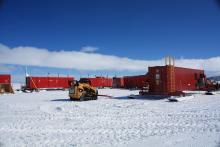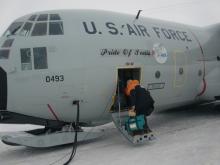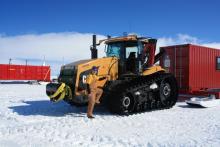Update
Archived PolarConnect Event: Celebrating Antarctica Day with the WISSARD project
3 December 2012
This one hour event is available in the PolarConnect Archives.
What Are They Doing?
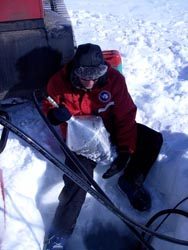
The WISSARD Project had three inter-related components:
- RAGES (Robotic Access to Grounding zones for Exploration and Science)
- LISSARD (Lake and Ice Stream Subglacial Access Research Drilling)
- GBASE (GeomicroBiology of Antarctic Subglacial Environments)
The primary goal of the first field season was to test and explore the zone (grounding zone) just before the grounded ice of the Whillans Ice Stream went afloat into the Ross Ice Shelf, which is thought to be a very sensitive area in terms of ice sheet dynamics and its response to global warming. During their deployment, the team used a hot water drill to melt boreholes deep into the ice stream. After the holes were melted, they tested and deployed complex new monitoring and sampling equipment under the ice.
Learn more about the project at the official project website.
Where Are They?
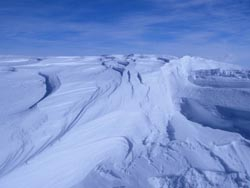
Latest Journals

Ross Powell has been a professor in the Department of Geology and Environmental Sciences at Northern Illinois University since the early 1980's. His main research interests focus on processes where glaciers and ice sheets enter the sea, and his recent research has focused on Alaskan and Antarctic glacimarine processes and paleoclimate history involving underwater remotely-operated vehicles (ROV's) among other scientific tools. He has played a lead role in the ANDRILL (Antarctic geological Drilling) Program and the WISSARD program, collecting sediment cores for the first time from a subglacial lake in Antarctica—Lake Whillans. He has mentored teachers in polar field research through the Cape Roberts and ANDRILL programs in Antarctica and the Svalbard REU program in the Arctic. He is also periodically a guest lecturer at the University Center (UNIS) on Svalbard.
John Priscu is a professor in the Department of Land Resources and Environmental Sciences at Montana State University. His research interest lies in life associated with Antarctic ice and its relationship to global change and astrobiology. Dr. Priscu heads the Priscu Research Group.

